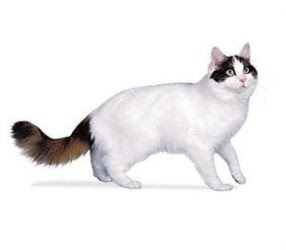
Turkish Van Cat
 The Turkish Van is an ancient and natural breed believed to have originated in the western part of Turkey which is also known as Eastern Anatolia. Because they were "discovered" by two Englishwomen (Sonia Halliday and Laura Lushington) in the 1950s near Lake Van, they were named the Turkish Van cats. Since that time, cats of other breeds that exhibit the classic pattern of a Turkish Van have been called "van patterned". The Turkish Van is the only cat that loves the water. It may be that this came about because of his need to catch fish but now it seems the breed just loves to swim for pleasure. After swimming it dries quickly because it has no undercoat. They may also become curious about toilets, so Don't leave the lid up!
The Turkish Van is an ancient and natural breed believed to have originated in the western part of Turkey which is also known as Eastern Anatolia. Because they were "discovered" by two Englishwomen (Sonia Halliday and Laura Lushington) in the 1950s near Lake Van, they were named the Turkish Van cats. Since that time, cats of other breeds that exhibit the classic pattern of a Turkish Van have been called "van patterned". The Turkish Van is the only cat that loves the water. It may be that this came about because of his need to catch fish but now it seems the breed just loves to swim for pleasure. After swimming it dries quickly because it has no undercoat. They may also become curious about toilets, so Don't leave the lid up!The Turkish Van is an active cat who is very smart. He is not a lap cat but a lively companion with a very lovely voice. They are very affectionate, giving head butts and love bites, but to the uninitiated this could be slightly alarming, but when you get to know your cat you will begin to understand. They are great climbers, so don't be surprised to find them sitting on top of doors, kitchen units or wardrobes, and some wouldn't think twice about climbing your curtains and sitting on the curtain rail. The Turkish Van is a very solid cat with a broad chest. It has a thick body and long legs that are muscular and wide set. The only color seen in the Turkish Van breed is white. The pattern you will see is called van. This is when only the head and tail have coloring. There can be no more than two spots on his body. In Turkey the true Turkish Cat is pure white with one amber eye and one blue eye, although the strong features of these classic cats can also be found in the van patterned variety. The first van patterned cats in Britain were auburn and white with amber eyes, and this became the standard for many years up until the introduction of the dilute form (cream and white) and the different eye colors (blue eyed, and odd eyed).











